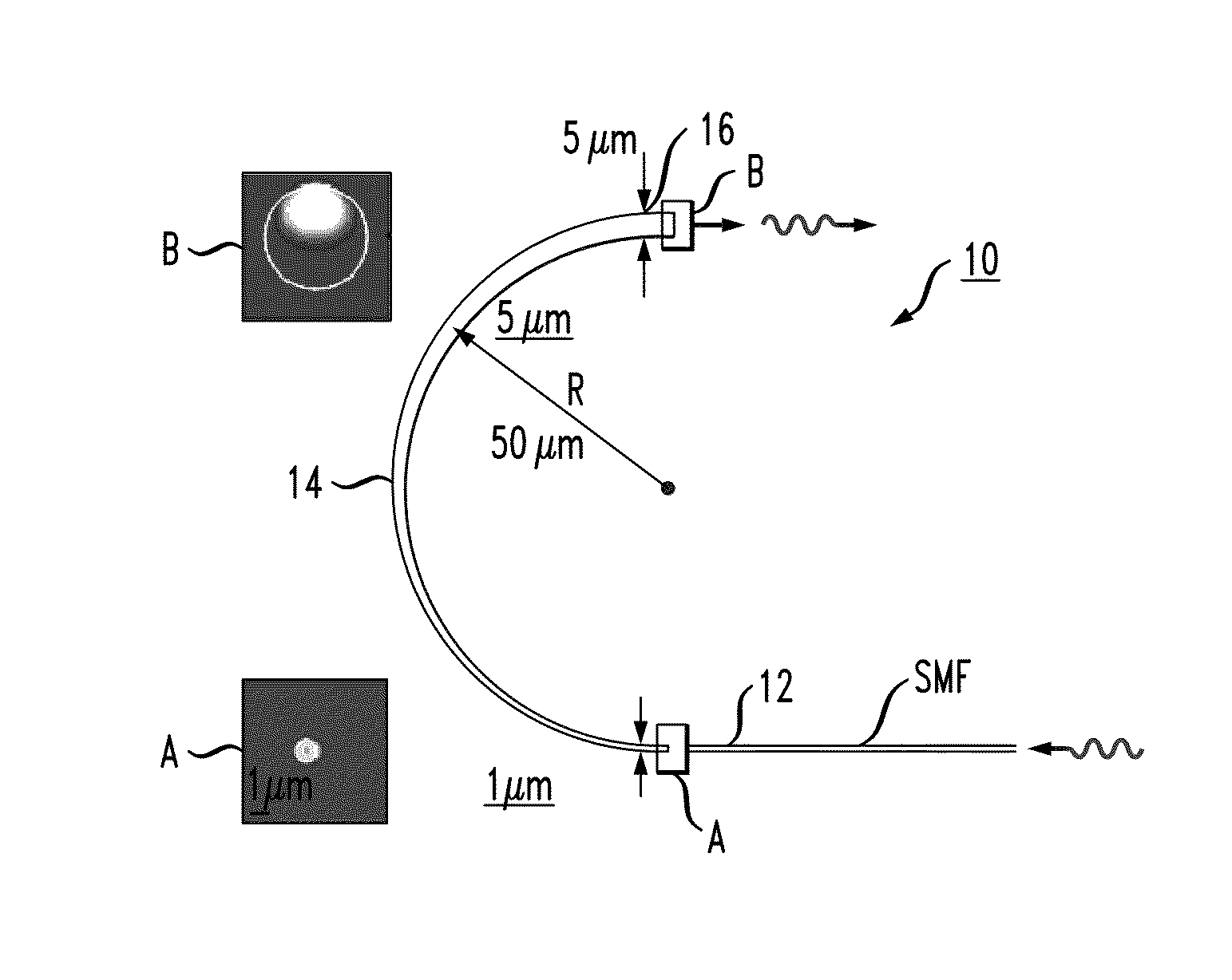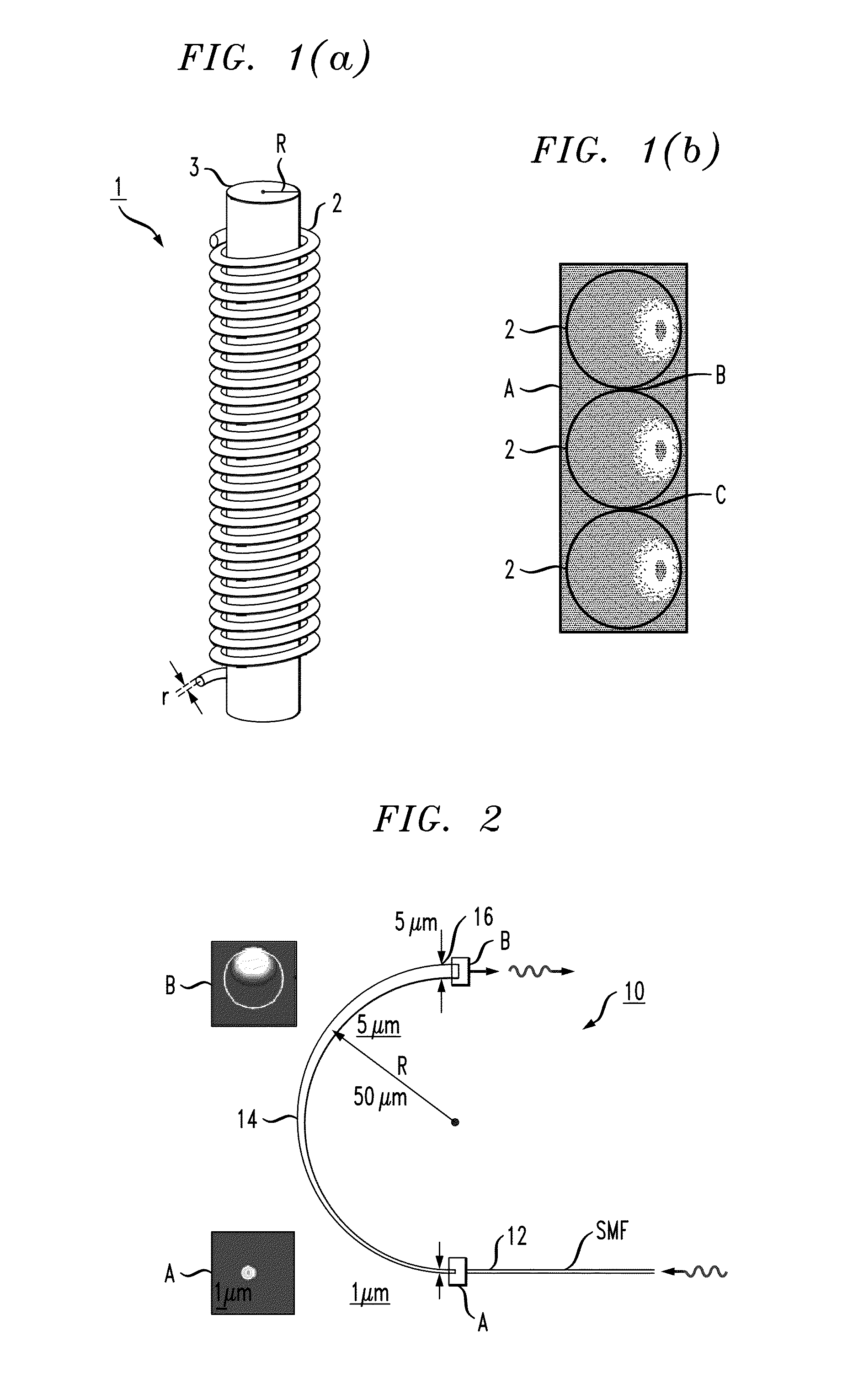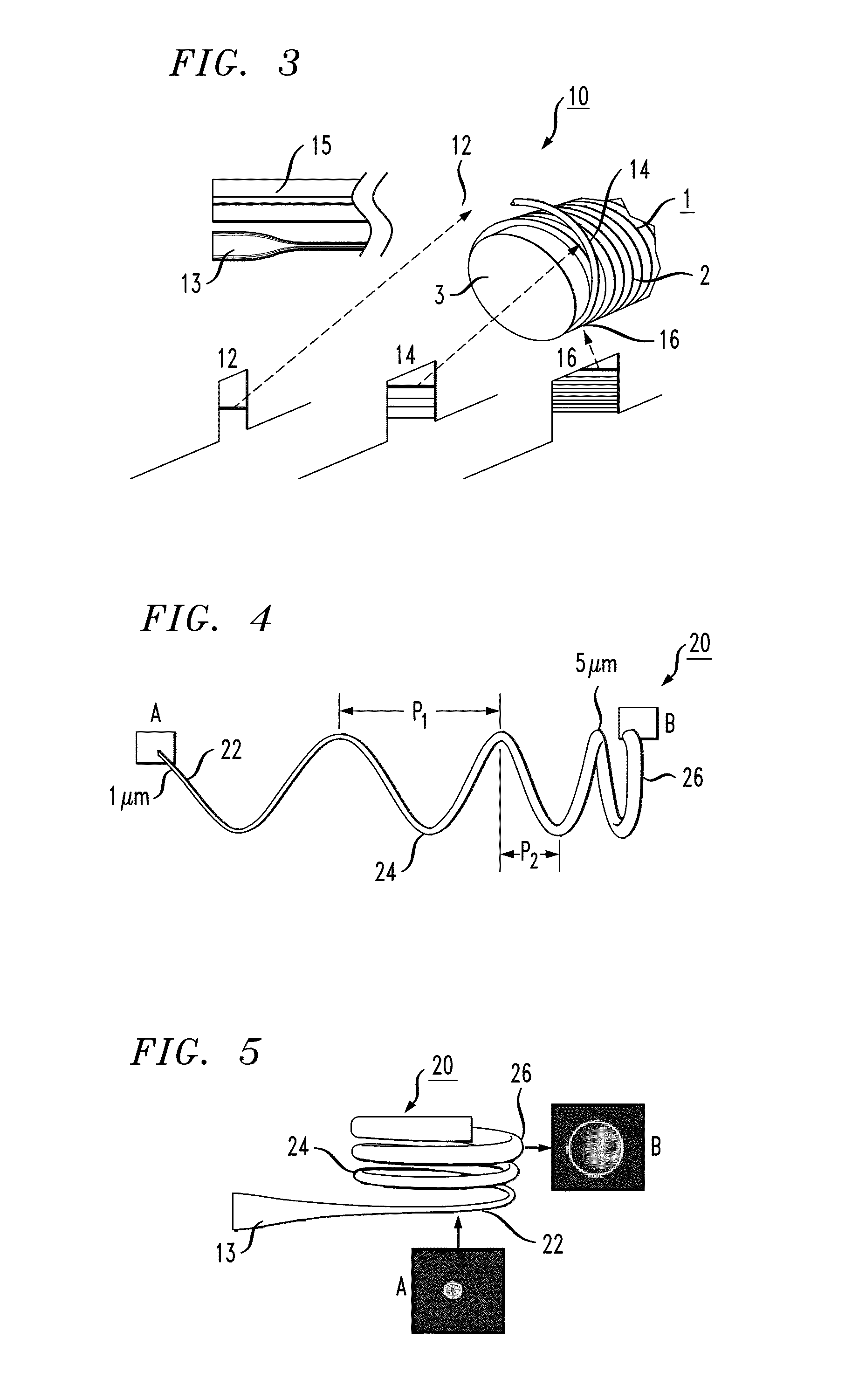Adiabatic coupler for coiled optical fiber devices
a technology of optical fiber and coupler, which is applied in the direction of optics, optical light guides, instruments, etc., can solve the problems of large mismatch between the coil and the conventional input/output waveguide or fiber, and the difficulty of coupling an input signal, etc., and achieve the effect of low loss transmission
- Summary
- Abstract
- Description
- Claims
- Application Information
AI Technical Summary
Benefits of technology
Problems solved by technology
Method used
Image
Examples
Embodiment Construction
[0027]FIG. 1(a) illustrates an exemplary optical fiber coil 1 as disclosed in my co-pending application. The propagating fundamental mode is shown in FIG. 1(b) as being confined to an extreme outer peripheral region of each turn 2 of optical fiber along the coil. By confining the propagating mode to this region, the coupling between adjacent turns—as well as between the turns and a central core rod 3—is significantly reduced, allowing for propagation with little or no scattering and / or bending losses.
[0028]While this configuration is considered a significant improvement over other types of optical delay devices, the ability to couple a propagating signal into or out of the desired extreme peripheral region of the fiber coil remains problematic. A suitable coupling arrangement needs to also address the physical size differences between standard input / output waveguides or fibers and the “micro” dimensions of an optical microfiber when using a microfiber to form coil 1.
[0029]The presen...
PUM
 Login to View More
Login to View More Abstract
Description
Claims
Application Information
 Login to View More
Login to View More - R&D
- Intellectual Property
- Life Sciences
- Materials
- Tech Scout
- Unparalleled Data Quality
- Higher Quality Content
- 60% Fewer Hallucinations
Browse by: Latest US Patents, China's latest patents, Technical Efficacy Thesaurus, Application Domain, Technology Topic, Popular Technical Reports.
© 2025 PatSnap. All rights reserved.Legal|Privacy policy|Modern Slavery Act Transparency Statement|Sitemap|About US| Contact US: help@patsnap.com



